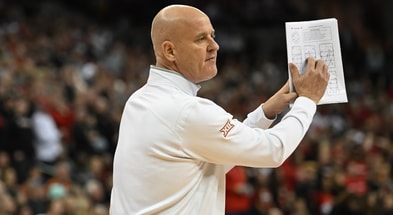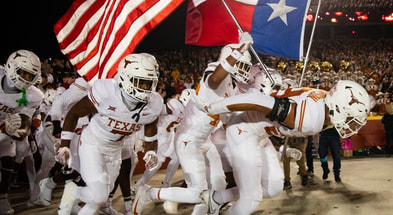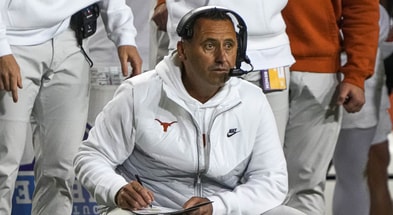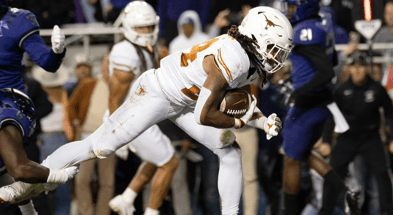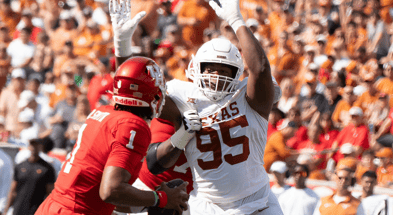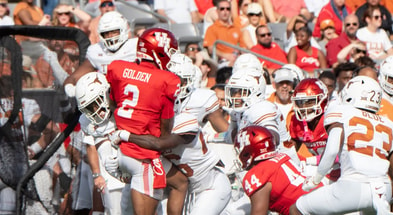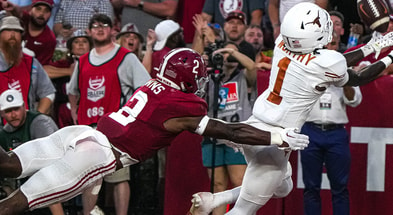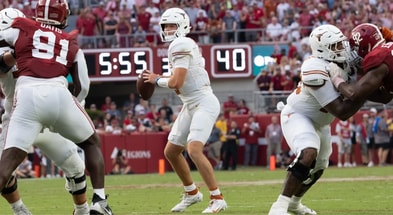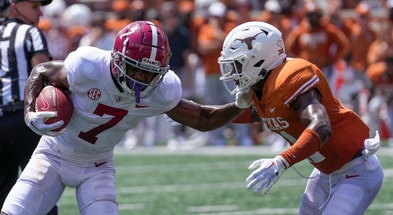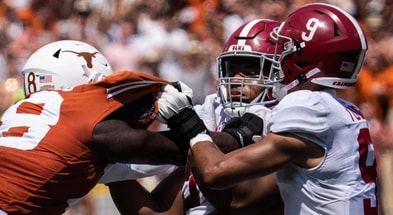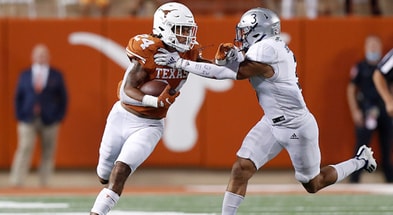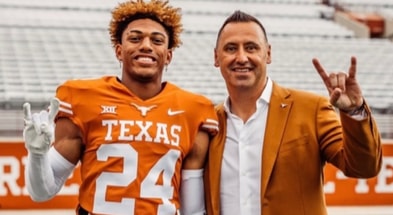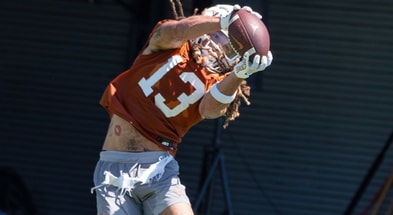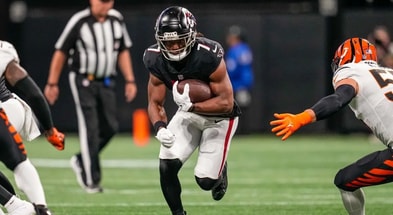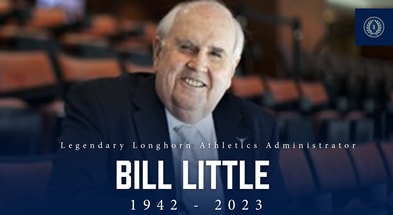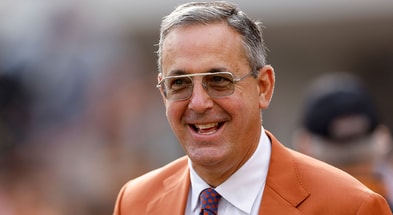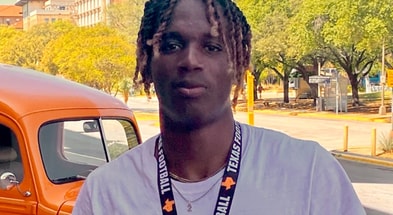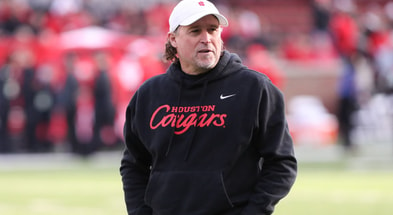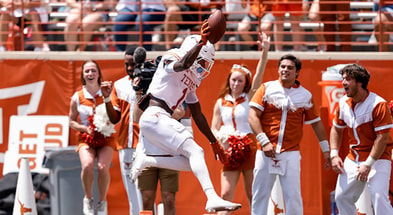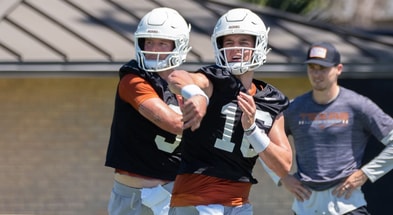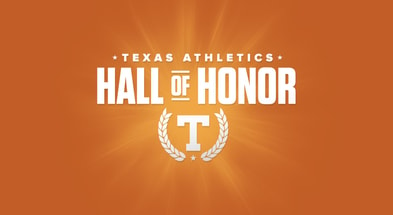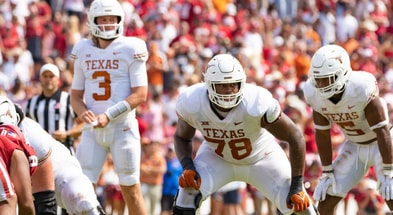Who won NSD1 in the Big 12?
I used to break down the HUDL of every single player in every single Big 12 class. Eventually it became a task that wasn’t worth doing between the time investment and the split signing days. It was hard enough to get through them all in February and March, to do so months after most players had already signed made it a fruitless exercise.
I also noticed the “space force” theory was more useful for projecting class results. Everyone around the league had different pathways and strategies for building teams and most everyone could figure out how to field competent or even very good units in the middle of the field. Oklahoma State this past year is a great example.
If your interior line includes a 6th year senior and a grad transfer from a G5 while your defensive interior includes multiple 5th and 6th year players, you stand to be pretty good.
However it’s pretty hard to coach and develop your way to a great space force. Guys either naturally have the length or fast twitch muscle fiber you need to dominate 1-on-1 matchups with other elite athletes in space or they don’t.
Space force in the 2021 Big 12
Ian Boyd the blogger didn’t really nail space force evaluations in the Big 12 in 2021, but space force as a theory did pretty well. We came pretty close to having the first ever Big 12 Champion with a weak left tackle had Oklahoma State won the game (OU had some years with weaker left tackles but then they had NFL Adrian Ealy on the right side). Cole Birmingham isn’t a disaster of a player, but he was a late position switch from guard, young, and hardly one of the better tackles in the league.
Instead, Baylor hung on for the win. Baylor, they of the offensive line with OLOY and 1st team All-Big 12 Connor Galvin manning the left tackle spot. They of star receiver Tyquan Thornton, and late coming edge Matt Jones. I missed the quality of Baylor’s space force, but it was there all along.
In lieu of the NSD1 results, I’ve seen a fair number of Baylor Bears trashing the Texas Longhorn fans with some of the following taunts:
- Signing another top 5 class never seems to help in Austin.
- The recruiting services inflate the rankings of players who go to bigger schools in bigger markets.
- Baylor is the Big 12 Champion so obviously things will be fine.
There’s some truth to all of them, although there are some rebuttals to be offered as well for why this NSD may actually signify a brighter future for Texas than Baylor.
- Texas hasn’t signed space force classes of this caliber in previous years.
- Maybe they do, but it’s not like the top rated players aren’t obvious athletes who are fought over by any school who can get them.
- Baylor’s 2021 space force and key players were rated fairly high in the rankings.
The last point has been a big one for me as I’ve tried to develop a better understanding of the interplay between recruiting rankings, NSD1, and actual winning on the field. I’ve routinely found that while class rankings can be highly misleading, the services don’t miss on which guys are athletes and it’s hard to win without athletes in key positions.
Consider the following from Baylor’s championship team.
- Left tackle Connor Galvin was a 4-star (88.63).
- Deep threat receiver Tyquan Thornton was a 4-star (89.93).
- Edge Matt Jones was a high 3-star (86.87).
- Top cornerback Raleigh Texada was a lower 3-star and a regular problem for Baylor.
Other key figures for Baylor included well developed and evaluated 3-stars like Abram Smith, Terrel Bernard, and Jalen Pitre. They also had some blue chip athletes in the mix like 4-star Siaki Ika, Trestan Ebner, and Gerry Bohanon who’s abilities often changed games for the Bears.
All that to say, the axiom still holds true. You need good athletes at key positions to consistently win games and the recruiting rankings are, if nothing else, typically a pretty good proxy for athleticism.
On3 space force rankings for the 2021 Big 12 NSD1
So what do the new On3 rankings make of the space force units signed by the Big 12?
Here’s how On3 ranks the teams in terms of total classes.
- Texas Longhorns. 27 commits, 19 blue chips, 89.71 average rating.
- Oklahoma Sooners. 15 commits, 13 blue chips, 90.88 average rating.
- Oklahoma State Cowboys. 17 commits, 6 blue chips, 87.69 average rating.
- Iowa State Cyclones. 21 commits, 3 blue chips, 86.26 average rating.
- West Virginia Mountaineers. 20 commits, 3 blue chips, 86.58 average rating.
- TCU Horned Frogs. 11 commits, 4 blue chips, 88.12 average rating.
- Baylor Bears. 20 commits, 3 blue chips, 86.69 average rating.
- Texas Tech Red Raiders. 18 commits, 3 blue chips, 85.88 average rating.
- Kansas State Wildcats. 16 commits, 0 blue chips, 84.01 average rating.
- Kansas Jayhawks. 7 commits, 0 blue chips, 83.69 average rating.
Pretty normal except that Baylor and TCU often finish higher. By this metric it was a good cycle for Oklahoma State and Iowa State in particular. Oklahoma also had a lower total number of commits than normal for some obvious reasons and less obvious reasons. I’m not sure they were ever signing a particularly big class but it definitely got smaller when Lincoln Riley went Hollywood on them.
So you have a familiar tale above and at this point many Big 12 fans are probably inclined to ignore them save for Iowa State and Ok State fans, who no doubt will see this as a sign of their ascendancy into the new Big 12.
Btw, here’s how the four prospective new members ranked (amongst each other).
- Central Florida Knights. 16 commits, 4 blue chips, 86.58 average rating.
- Cincinnati Bearcats. 20 commits, 3 blue chips, 85.80 average rating.
- Houston Cougars. 12 commits, 2 blue chips, 85.05 average rating.
- BYU Cougars. 20 commits, 3 blue chips, 83.19 average rating.
They all score within the thick middle of the existing Big 12.
But how does this shake out with the space force filter? Keep in mind these are only signed players and I used On3’s positional designations, which may or may not bear out over time. I also had to make some calls on “athletes” about if they should count or not and just made the best guess I could. As for the transfer portal, we’ll get to that as it shakes out further.
Still, this gives a useful glimpse.
- Texas Longhorns. 8 commits, 7 blue chips, 92.26 average rating.
- Oklahoma State Cowboys. 9 commits, 4 blue chips, 87.88 average rating.
- Oklahoma Sooners. 4 commits, 4 blue chips, 91.85 average rating.
- Baylor Bears. 8 commits, 2 blue chips, 87.21 average rating.
- TCU Horned Frogs. 4 commits, 2 blue chips, 88.09 average rating.
- West Virginia Mountaineers. 6 commits, 1 blue chip, 86.81 average rating.
- Iowa State Cyclones. 8 commits, 1 blue chip, 85.39 average rating.
- Texas Tech Red Raiders. 4 commits, 1 blue chip, 86.21 average rating.
- Kansas State Wildcats: 6 commits, 0 blue chips, 84.23 average rating.
- Kansas Jayhawks. 2 commits, 0 blue chips, 83.86 average rating.
Gives a different perspective, right?
Iowa State may have signed a well regarded class and Baylor a less one by the overall accumulation of talent, but how much does that matter?
In the long term, both are going to have close to 85 scholarship players and these rankings aren’t going to give you a clear idea of which program will be in better shape in the middle of the field save for indicating which year a given team might have more seniors than another.
What you can see from this distinction is which schools are recruiting space force athletes in a given year and then how many of those are top rated, clearly great athletes.
From that perspective, things look a little more normal and this year stands out as particularly good for Texas and Oklahoma State, strong for Baylor, and then a little down for Oklahoma but not disastrously so. Also, it counted Kobie McKinzie as an inside-backer for the Sooners and I tend to think that blue chip will end up on the edge. Don’t worry about the Sooners just yet.
What about at tackle?
I’d like to make one final distinction here with the space force rankings. The number of blue chip skill athletes in the world is very high, particularly at receiver and less so at cornerback but still moreso than in the trenches. The freak edge rusher who weighs 240 or more and can bend around the edge is also in limited supply.
But left tackle is the most precious and rare commodity. You need a guy who has real size, length, flexibility and athleticism, and then also the want-to to translate all of those traits into being a great left tackle. It’s not enough to have football come easily to you, you’re not going to thrive in a contact sport if you don’t love it enough to invest time in honing your craft. You don’t become fantastic at the kick-step and fine-tuned pass protection if you aren’t motivated to invest major time.
So, the teams who sign big time tackles are at a massive advantage.
Here’s the quick list of championship tackles in the Big 12 since they added the title game in 2017.
- 2017: Oklahoma’s Orlando Brown. 89.03 (4-star).
- 2018: Oklahoma’s Bobby Evans. 91.13 (4-star)
- 2019-20: Oklahoma’s Adrian Ealy. 89.98 (4-star)
- 2021: Baylor’s Connor Galvin. 88.63 (4-star)
Iowa State, Texas, TCU, and Oklahoma State have all made runs at the title game and fell short. Those losing teams had a pair of future NFL players in Joseph Noteboom and Sam Cosmi at tackle, but interestingly enough none of them had a blue chip recruit manning the left tackle position. The winner always did. Even Oklahoma’s 2019 and 2020 tackle Erik Swenson was a blue chip despite not being particularly great. He was also paired with Ealy who served as more of their island tackle and afforded them the benefits of a top player at tackle.
Here’s how the Big 12 squads did in securing tackles on 2022’s NSD1.
- Texas Longhorns. 3 commits, 3 blue chips, 91.64 average rating.
- Oklahoma Sooners. 1 commit, 1 blue chip, 93.550 rating.
- Oklahoma State Cowboys. 2 commits, 1 blue chip, 85.91 average rating.
- West Virginia Mountaineers. 2 commits, 0 blue chips, 87.31 average rating.
- Baylor Bears. 3 commits, 0 blue chips, 86.03 average rating.
- Kansas State Wildcats. 3 commits, 0 blue chips, 84.52 average rating.
- Kansas Jayhawks. 2 commits, 0 blue chips, 83.86 average rating.
- Iowa State Cyclones. 2 commits, 0 blue chips, 83.76 average rating.
- Texas Tech Red Raiders. 1 commit, 0 blue chips, 82.23 rating
- TCU Horned Frogs. 1 commit, 0 blue chips, 82.061 rating.
This really changes the perspective doesn’t it? Texas loaded up with an embarrassment of riches, Oklahoma got one really athletic player, and then Ok State and West Virginia were the only others to to really come close to the championship standard.
Iowa State, who notably had several really good players this year but has never had a great left tackle under Matt Campbell, looks like more of the same as you peak at their otherwise highly ranked class through this lens. TCU’s need under Sonny Dykes to work the transfer portal (don’t worry, it’s the plan) is made very clear. Baylor probably feels a little better if they buy into this metric but not great while K-State and West Virginia probably feel a little closer than otherwise.
Oklahoma State feels about the same regardless of your prism. Mike Gundy isn’t sweating the 2021 Big 12 Title, he sees opportunities to win a lot more in the coming years when big, bad Oklahoma is gone.
Who do you think won NSD1 in the Big 12? Discuss for free on the Flyover Football board!
